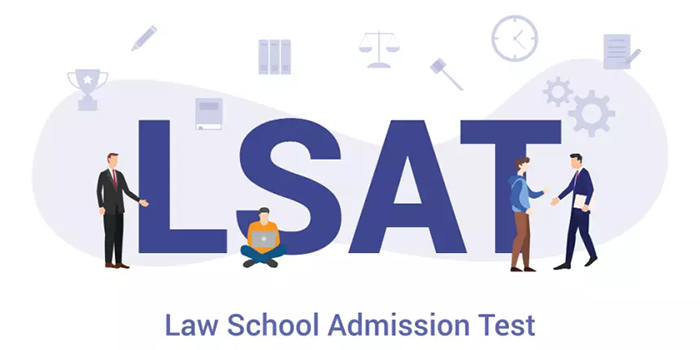
The Law School Admission Test (LSAT) is a standardized test administered by the Law School Admission Council (LSAC) to prospective law school applicants. The LSAT is designed to assess the potential of applicants to succeed in law school and the legal profession. It consists of five multiple–choice sections and a writing sample. The multiple–choice sections measure reading comprehension, verbal reasoning, and analytical reasoning. The writing sample is an essay that is graded separately from the other sections. The LSAT is typically taken by prospective law school applicants during their junior or senior year of college.
Law School Admission Test (LSAT)Eligibility Criteria
In order to be eligible to take the Law School Admission Test (LSAT), you must meet the following criteria:
1. You must be a minimum of 18 years of age.
2. You must have a high school diploma or equivalent.
3. You must be in good academic standing at your current educational institution.
4. You must be a citizen or permanent resident of the United States or Canada.
5. You must register for the LSAT by the appropriate deadline.
6. You must be able to work independently and adhere to the LSAT‘s time limits.
7. You must have a valid form of payment, such as a credit card or money order, to cover the LSAT registration fee.
Law School Admission Test (LSAT) Colleges In India
1. Jindal Global Law School, Sonipat, Haryana
2. Symbiosis Law School, Pune, Maharashtra
3. Gujarat National Law University, Gandhinagar, Gujarat
4. National Law Institute University, Bhopal, Madhya Pradesh
5. Faculty of Law, University of Delhi, Delhi
6. Rajiv Gandhi National University of Law, Patiala, Punjab
7. Amity Law School, Noida, Uttar Pradesh
8. The West Bengal National University of Juridical Sciences, Kolkata, West Bengal
9. Government Law College, Mumbai, Maharashtra
10. National Law University, Jodhpur, Rajasthan
Law School Admission Test (LSAT) List of Stream
1. Analytical Reasoning
2. Logical Reasoning
3. Reading Comprehension
4. Writing Sample
Law School Admission Test (LSAT) Syllabus
The Law School Admission Test (LSAT) covers three main areas: reading comprehension, analytical reasoning, and logical reasoning.
Reading Comprehension
The Reading Comprehension section of the LSAT is designed to test a student’s ability to read and comprehend complex material. This section consists of four sets of reading material, each followed by a set of multiple–choice questions. The material will generally consist of long passages from literary, philosophical, scientific, and social sciences sources. The passage sets may also include brief quotations from other sources.
Analytical Reasoning
The Analytical Reasoning section of the LSAT is designed to measure a student’s ability to analyze a set of facts and draw logical conclusions from them. This section consists of four sets of multiple–choice questions, each of which has a set of facts and a set of rules that govern the relationships between the facts. This section is also known as the “Logic Games” section.
Logical Reasoning
The Logical Reasoning section of the LSAT is designed to measure a student’s ability to recognize and analyze the structure of arguments. This section consists of two sets of multiple–choice questions, each of which has a set of premises and a set of conclusions that are based on the premises. The student must then analyze and evaluate the arguments, and answer questions based on the structure and content of the arguments.



